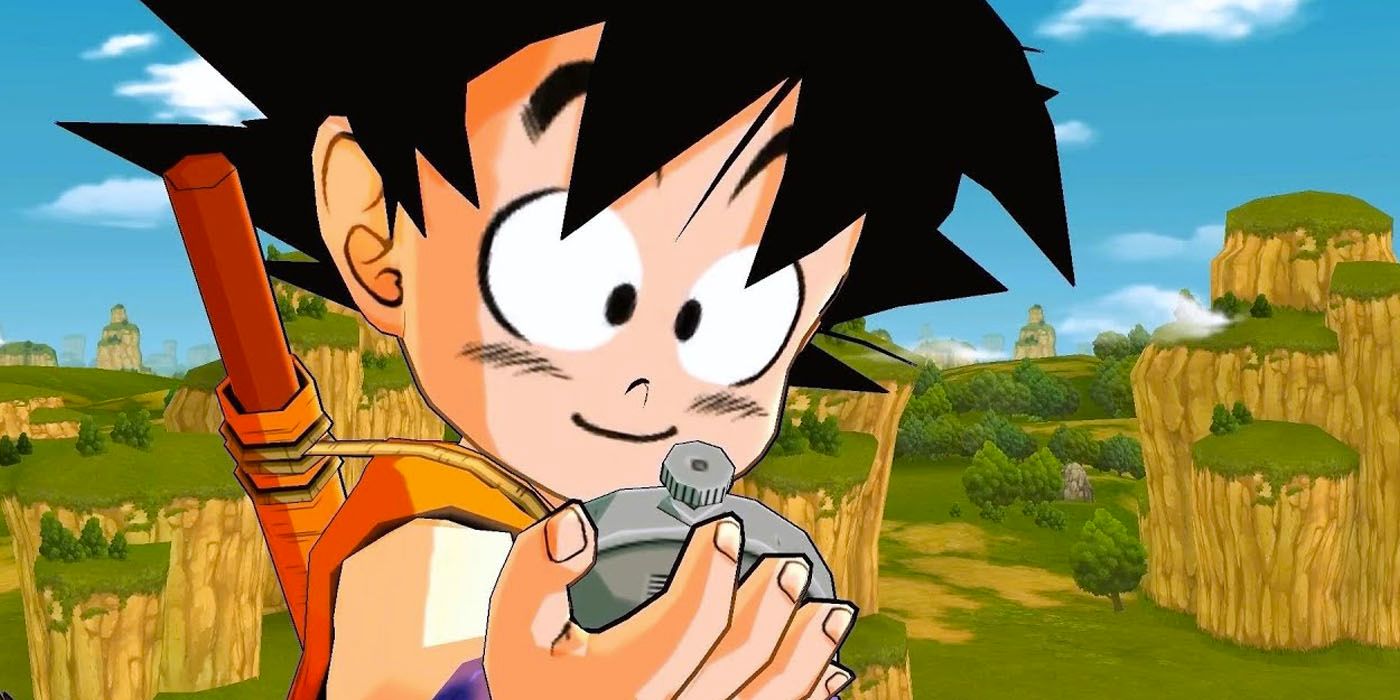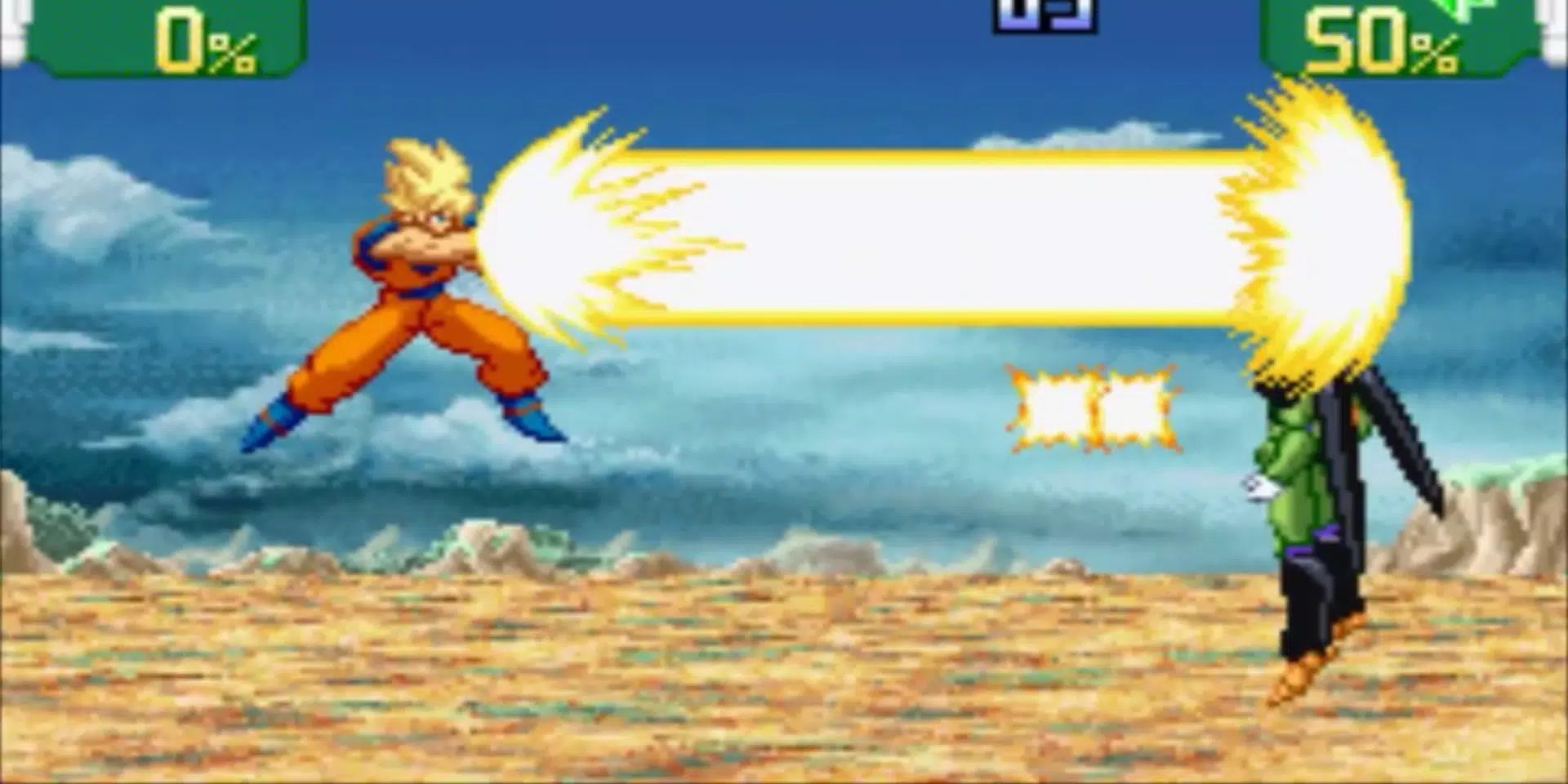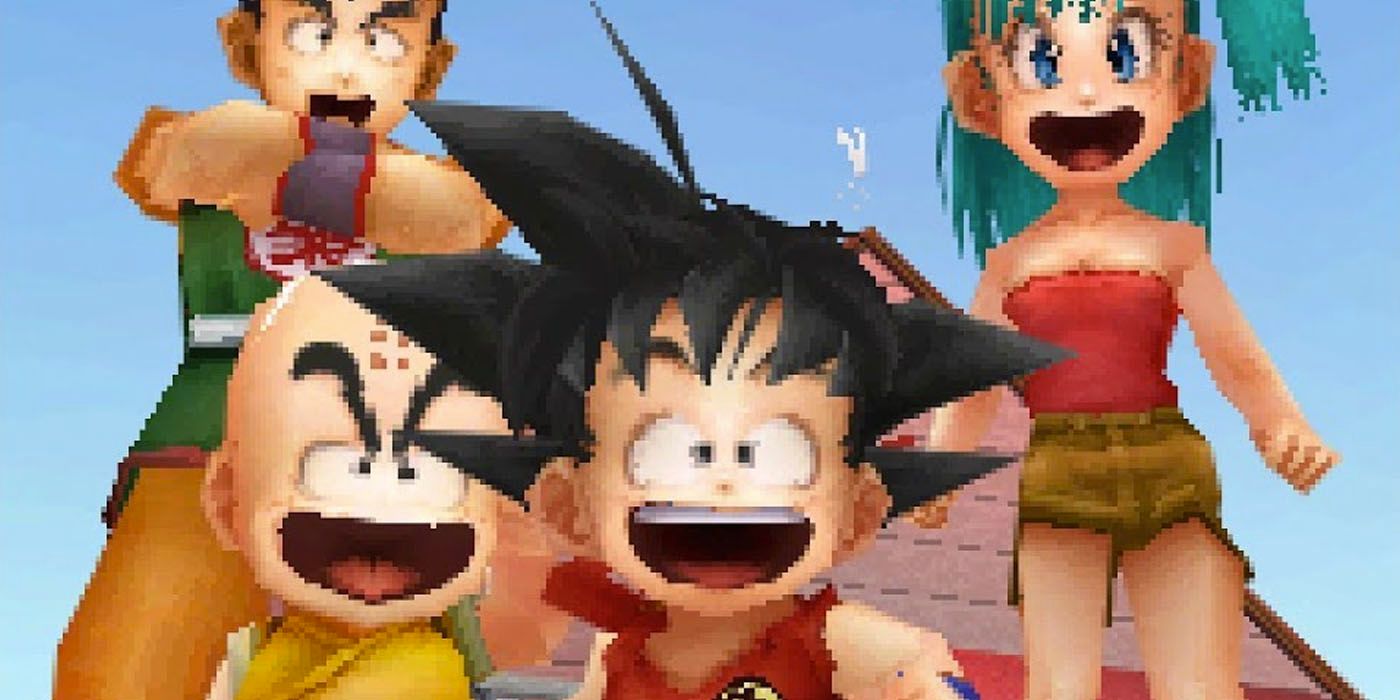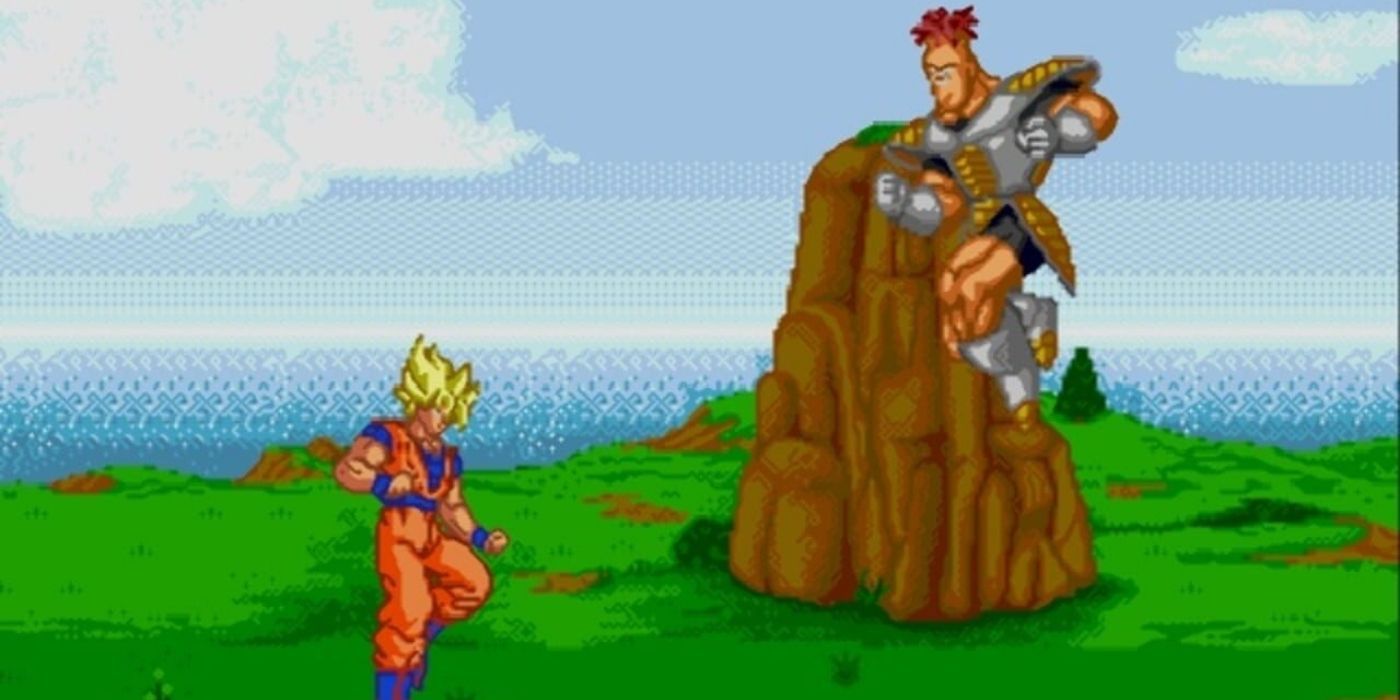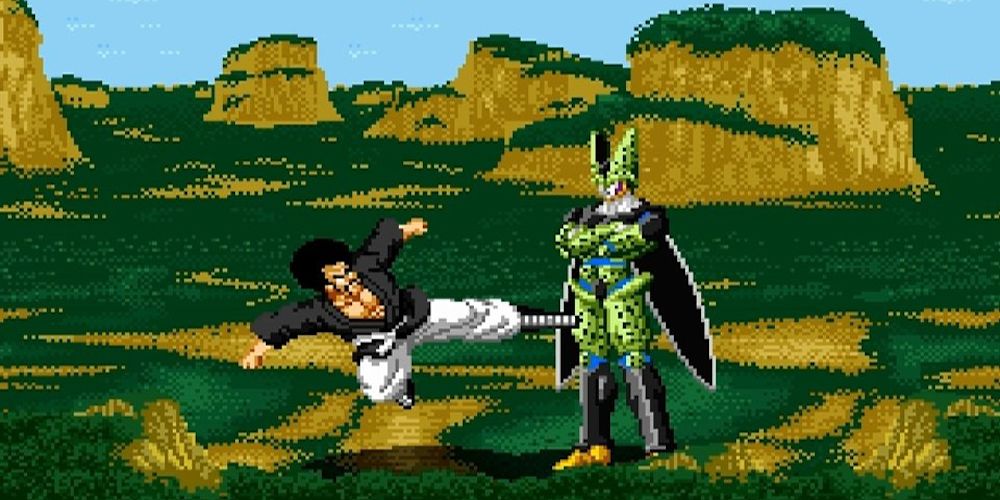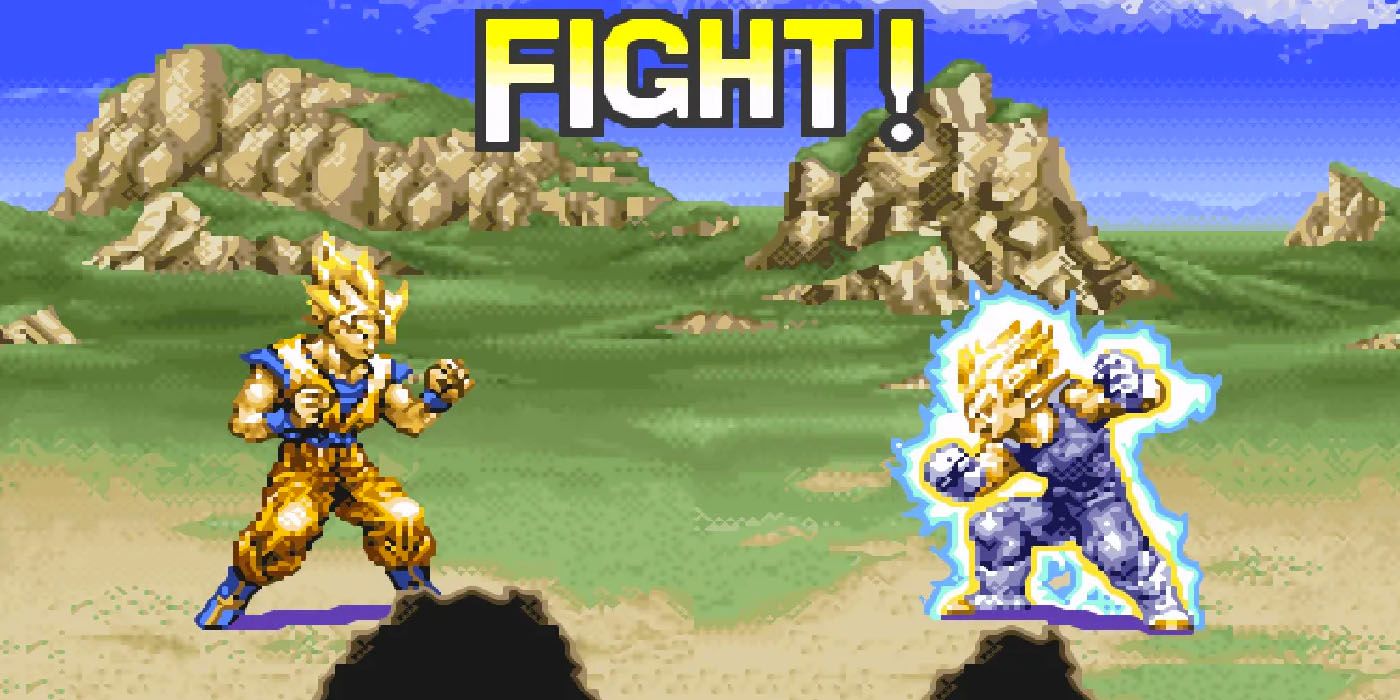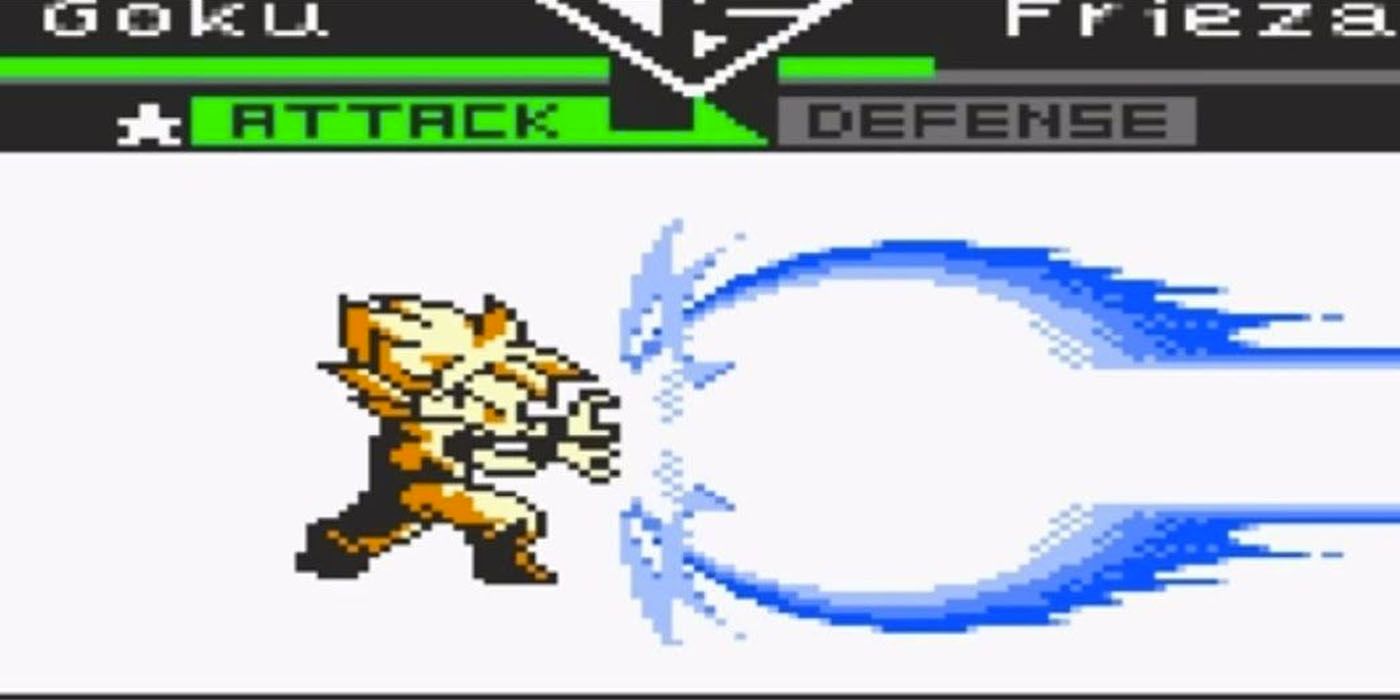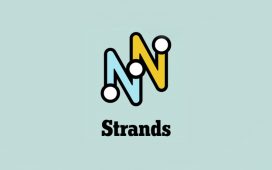Akira Toriyama’s Dragon Ball is one of the most successful anime and manga series of all time, but it’s managed to translate this success into an evergreen presence in the video game industry. More than 50 Dragon Ball video games have been produced since the series’ debut and a steady stream of content helped Toriyama’s series stay relevant during the anime and manga’s dark years. Dragon Ball games tackle a wide range of genres and modern titles beautifully capture the anime’s heightened energy and combat.
Recent Dragon Ball video games such as Dragon Ball FighterZ, Dragon Ball Z: Kakarot, and Dragon Ball Xenoverse 2 are among the biggest and best games that the franchise has ever seen. Dragon Ball: Sparking! ZERO’s upcoming release also has plenty of lapsed gamers excited to jump back into a Dragon Ball title. That being said, it’s important to not forget the decades of retro titles that helped Dragon Ball video games get where they are today. These games might be on older hardware and lack the polish and precision of modern titles, but there are some exceptional retro Dragon Ball retro games out there that are still fun to play.
10 Dragon Ball Z: Collectible Card Game Translates Card-Based Chaos To The Game Boy Advance
Release Date: May 29, 2002; Console: Game Boy Advance
Pokémon and Yu-Gi-Oh! have set new standards when it comes to anime-based collectible card games, which have almost become a rite of passage for popular anime series. Everything from My Hero Academia to Mobile Suit Gundam has received a CCG, but it’s always interesting when the card game’s success facilitates a digital version of the experience. Dragon Ball Z: Collectible Card Game, much like Pokémon Trading Card Game for the Game Boy Color, distills the tangible CCG into a compelling video game.
Dragon Ball Z: Collectible Card Game features over 300 cards that span up to the CCG’s Cell Saga expansion with gameplay that properly simulates the real thing. Dragon Ball Z: Collectible Card Game is a brilliant way for newcomers to get a taste of the CCG without having to shell out money for booster packs that may or may not contain new cards. The Game Boy Advance game merges the anime’s kinetic combat with card-based battle and functionality with the Game Boy Advance’s Link Cable, so players can trade cards and engage in battle with other humans, rather than exclusively facing CPU opponents.
9 Dragon Ball: Revenge Of King Piccolo Is An Action-Packed Love Letter To The Original Series
Release Date: October 20th, 2009; Console: Wii
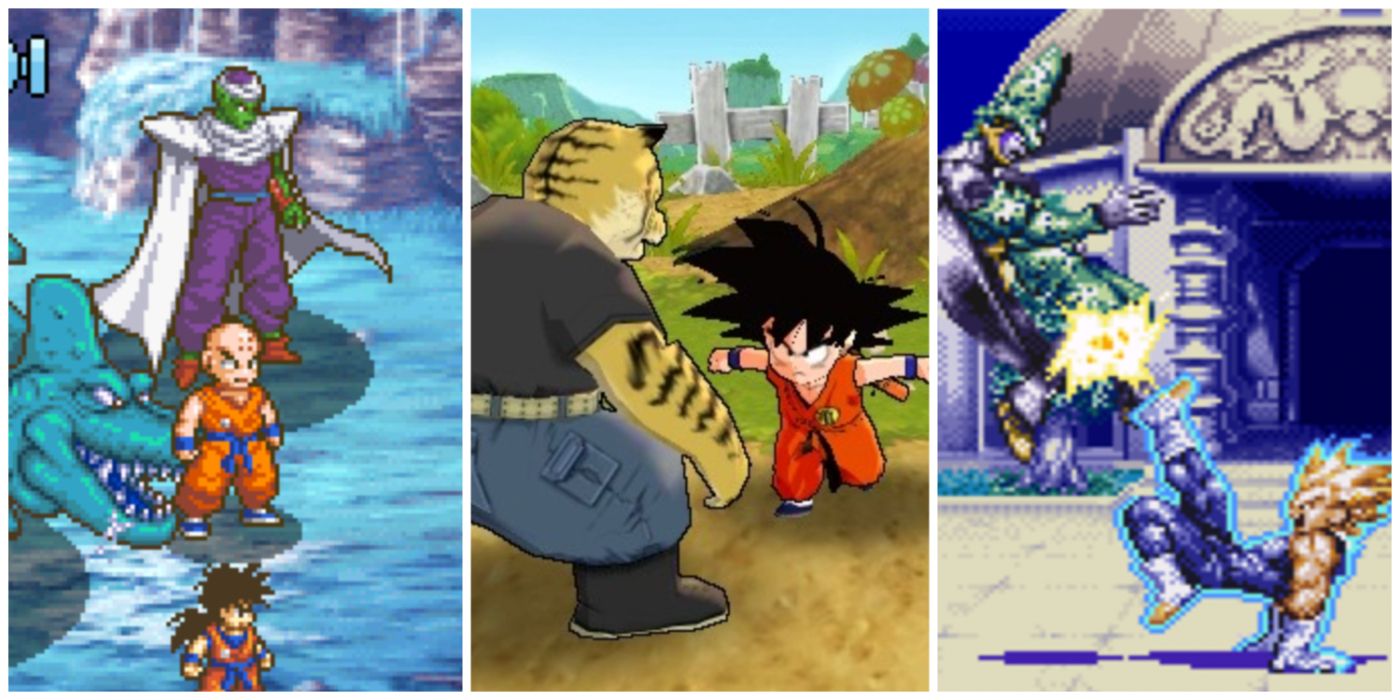
10 Best Dragon Ball Games You Didn’t Even Know Existed
Akira Toriyama’s Dragon Ball has been around for over 30 years, so only superfans would be aware of obscure games like Dragon Ball Z: Hyper Dimension.
For decades, Dragon Ball video games focused almost exclusively on Dragon Ball Z‘s story and characters. There was an exciting period when it felt like Dragon Ball Z had been tapped dry and there was greater value in exploring stories from its predecessor, Dragon Ball. Dragon Ball: Revenge of King Piccolo is a game that many audiences missed due to the fact that it was exclusive to Nintendo’s Wii console. Revenge of King Piccolo is a beat-’em-up platformer akin to the Game Boy Advance’s Dragon Ball: Advanced Adventure, but it’s the stronger of the two titles. For one, Revenge of King Piccolo skips over Dragon Ball’s introductory story material and instead focuses on the Red Ribbon and King Piccolo Sagas.
There’s a surprisingly sophisticated yet simple combat style and an attractive 3D visual design that captures the magic of Akira Toriyama’s source material. Revenge of King Piccolo has a strong story and mild RPG elements that deepen the gameplay, but there is also an abundance of hidden collectibles that incentivize repeated playthroughs. Revenge of King Piccolo also includes a robust multiplayer versus mode that features a varied roster that includes Spike the Devil Man, Bandages the Mummy, Grandpa Gohan, Drum, and even Dr. Slump‘s Arale.
8 Dragon Ball Z: Supersonic Warriors & Supersonic Warriors 2 Are Tight, Creative Fighting Games
Release Dates: June 22, 2004 (Supersonic Warriors), November 20, 2005 (Supesonic Warriors 2); Consoles: Game Boy Advance (Supersonic Warriors), Nintendo DS (Supersonic Warriors 2)
The Game Boy Advance’s Dragon Ball Z: Supersonic Warriors and its Nintendo DS sequel are handheld fighting games that cover the entirety of Dragon Ball Z and feature detailed combat and character systems that reward those who value strategy in their fighting games. The original game gives each character three distinct forms, while the sequel focuses on team battles where the player builds a team of three fighters.
There are more than a dozen playable characters in each of the Supersonic Warriors games, all of whom have original story modes instead of the same repetitive experience. These games, particularly Supersonic Warriors 2, go all out with the support players and have some surprisingly deep cuts, like Neko Majin Z from Toriyama’s gag manga of the same name. One of the biggest selling points of both of these fighting games is the creative “What If?…” scenarios that they explore, which get into genuinely compelling ideas, like what if Meta-Cooler came to Earth and challenged Cell or what if Babidi made Piccolo Majin instead of Vegeta.
7 Dragon Ball: Origins & Origins 2 Give Dragon Ball A Zelda Makeover
Release Dates: November 4, 2008 (Origins), June 22, 2010 (Origins 2); Console: Nintendo DS
Dragon Ball: Origins and Origins 2 are a pair of Nintendo DS games that take the excellent action-adventure framework from the handheld console’s The Legend of Zelda: Phantom Hourglass and translate it to the Dragon Ball world. These titles collectively cover up to the original Dragon Ball‘s Red Ribbon Army Saga and really celebrate the DS’ dual touchscreen and stylus gameplay — although this has also led to the games remaining as Nintendo DS exclusives. The stylus leads to a very natural control scheme that makes combat and ki attacks a delight to deliver.
There’s also clever incorporation of racing levels where Goku barrels ahead on the Flying Nimbus. Dragon Ball: Origins only features Goku as a playable character, but Origins 2 incorporates Bulma, Krillin, and Yamcha into the mix, as well as a satisfying two-player co-op mode. These are underrated DS games that get great mileage out of Dragon Ball and it’s a shame that they haven’t been ported to modern consoles. The Japanese version of Dragon Ball: Origins 2 even includes an emulated version of Shenlong no Nazo for the Famicom, the first Dragon Ball console game, as an excellent bonus.
6 Dragon Ball Z: Buyu Retsuden Is The Sega Genesis’ Standout DBZ Fighter
Release Date: April 1, 1994; Console: Sega Genesis
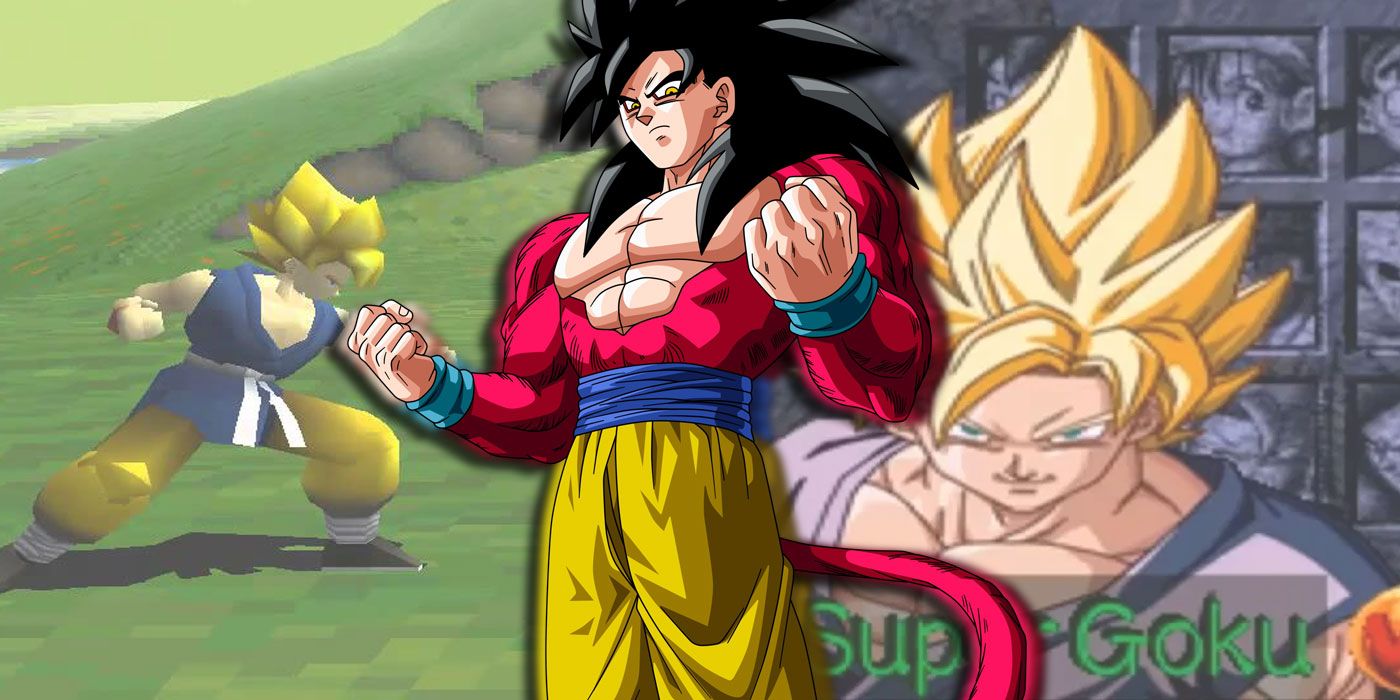
Dragon Ball’s First North American Video Game Release Was a Total Flop
Dragon Ball GT: Final Bout was North America’s first taste of a Dragon Ball game, but the forgettable title had notably terrible sales upon release.
The ’90s were full of Dragon Ball Z fighting games for the Super Nintendo. However, encouraging sales for the Sega Genesis — especially in Europe — created a demand for comparable content on Sega’s 16-bit gaming console. The SNES benefitted from a trilogy of Super Butoden games, while Buyu Retsuden was developed as the Genesis’ equivalent. Dragon Ball Z: Buyu Retsuden is a fairly standard one-on-one 2D fighter that borrows a lot from Street Fighter II and Mortal Kombat. It essentially operates like a remix of Super Butoden and Super Butoden 2.
Gameplay is nearly identical to the SNES games and the story, settings, and characters largely pull from Dragon Ball Z‘s Frieza and Cell Sagas. Buyu Retsuden slightly pales in comparison to the height of the Super Butoden series, but it’s still a fun enough time for the Sega crowd. It’s also satisfying to have characters like Recoome and Captain Ginyu included in Buyu Retsuden’s 11-character roster.
5 Dragon Ball Z: Shin Butoden Is A Stellar 32-Bit Fighter With A Unique Bonus Mode
Release Date: November 17, 1995; Console: Sega Saturn
Dragon Ball Z: Ultimate Battle 22 was a popular 2D fighter for the PlayStation, albeit one that didn’t receive much critical acclaim. The game’s developer, TOSE Software, developed a counterpart for the Sega Saturn, Dragon Ball Z: Shin Butoden (also known as Dragon Ball Z: True Fighting Story), which is a worthy improvement. Shin Butoden benefits from the Sega Saturn’s hardware and features detailed battle environments and crisp music.
The game’s story mode only covers the Androids and Cell Games Saga, but the roster of 27 characters spans the entire series, including deeper cuts like Dabura, Shin, Zarbon, Master Roshi, and Great Saiyaman. Shin Butoden also includes a rather creative Mr. Satan Mode where the player bets on battles and cheats their way to success through the use of items like banana peels, mines, and dynamite. Ultimate Battle 22 still gets a lot of attention, but it’s Shin Butoden who’s the true 32-bit winner.
4 Dragon Ball Z: Super Butoden 2 Is The Peak Of Super Nintendo Fighting Games
Release Date: October 20, 2015; Console: Super Nintendo
The Super Nintendo’s trilogy of Super Butoden games were an impressive benchmark for 2D anime fighters. The original Dragon Ball Z: Super Butoden is an ambitious game that spans from the Piccolo Jr. storyline all the way to the Cell Saga with many fresh features for a fighting game. That being said, Super Butoden 2 is an improvement in nearly every regard and the trilogy’s apex.
The fighting game’s mechanics get ironed out to be more agreeable and precise, plus the game’s story mode features branching paths and multiple endings. Super Butoden 2 is one of the best-looking Super Nintendo games, and it was a big deal at the time for it to feature several movie characters, like Broly, Bojack, Zangya. Even Cell Jr. makes the cut. Unfortunately, Super Butoden 3 lacks a story mode and loses Piccolo from its roster, which is why Super Butoden 2 remains the franchise’s strongest entry and a standout SNES fighter in general.
3 Dragon Ball Z: Hyper Dimension Is The Final Super Nintendo Dragon Ball Fighting Game – And The Best
Release Date: March 29, 1996; Console: Super Nintendo
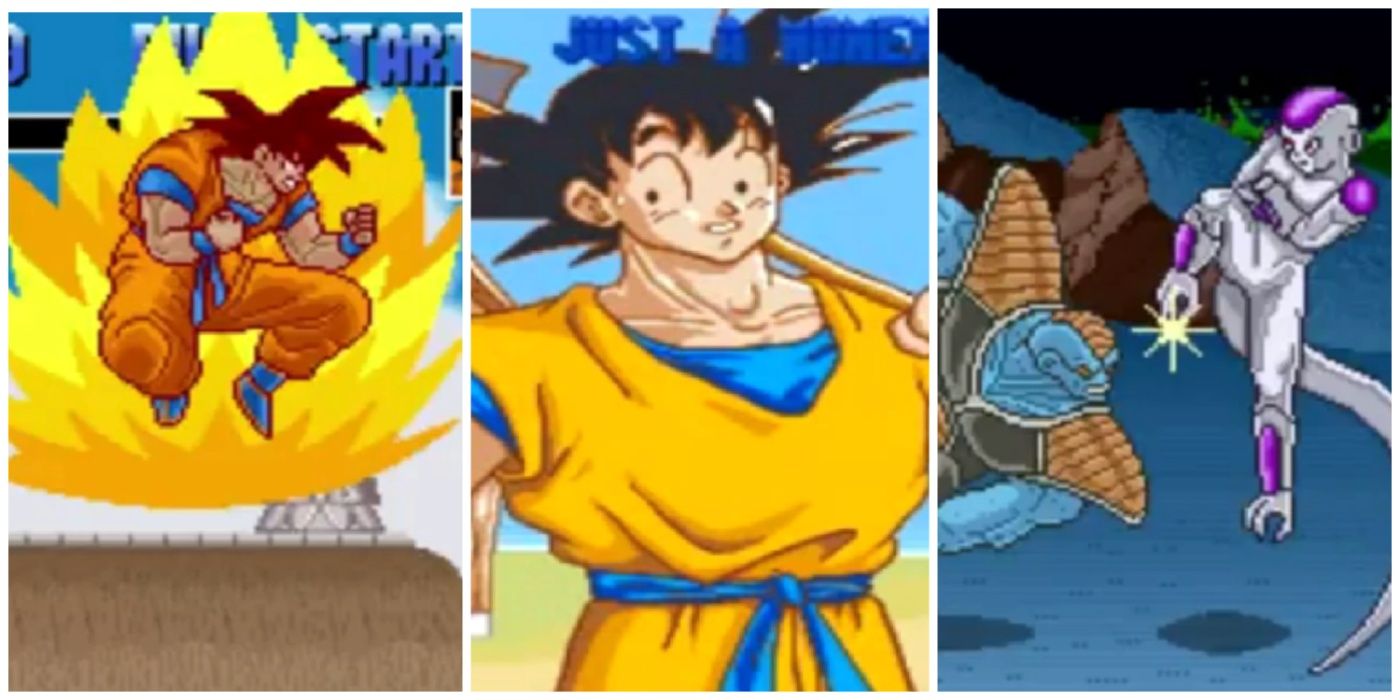
Dragon Ball Z Had A Robot-Shaped Arcade Cabinet In The ’90s
One of Dragon Ball Z’s best video games is a relatively obscure ’90s arcade title with a robot-shaped cabinet!
Dragon Ball Z: Hyper Dimension is frequently considered to be the crowning achievement of Super Nintendo Dragon Ball fighting games that beautifully synthesizes everything that came before it. While not officially a Super Butoden game, Hyper Dimension was largely developed by most of the same team that worked on the previous SNES fighting series. Hyper Dimension is easily the most visually impressive Dragon Ball Z game for the Super Nintendo that benefits from its 1996 release date. Hyper Dimension incorporates many mechanics from not only the Super Butoden series but also Street Fighter II.
There’s a customizable six-button control scheme that features special moves, meteor combos, and a new “Rush Battle System” that’s activated when two ki attacks are triggered at the same time. Hyper Dimension also includes desperation moves that are activated when a character’s health becomes exceedingly low. Hyper Dimension plays well and features an engaging story that begins with the Frieza Saga and concludes with Dragon Ball Z‘s ending. The only real concession is that the game’s limited roster of ten characters focuses on the franchise’s most popular fighters instead of a more creative selection of characters.
2 Dragon Ball Z: Legendary Super Warriors Is A Turn-Based Card Fighter That Punches Way Above Its Weight
Release Date: June 30, 2002; Console: Game Boy Color
There are many Dragon Ball games for Nintendo’s Game Boy Advance and Nintendo DS. However, there’s a modest Game Boy Color game that’s still among the best Dragon Ball Z games of any generation. Dragon Ball Z: Legendary Super Warriors is a card-based strategy game that covers the entirety of Dragon Ball Z — including The History of Trunks special — and gives the player so much to do. Legendary Super Warriors features 125 cards and 48 playable characters (including transformations) that gives this Game Boy Color title incredible replay value.
Secret characters are unlocked under specific conditions. The player also has the luxury of using any character in story mode once they’ve beaten the game. It’s particularly satisfying to put Super Saiyan 3 Goku up against Frieza, Nappa against Cell, or Captain Ginyu against Kid Buu. It’s a truly fun game that rewards the player for their dedication. Despite being a Game Boy Color game, there are still multiplayer and battle modes available, too.
1 The Dragon Ball Z: Legacy Of Goku Trilogy Is A Masterpiece That Can Compete With Any Modern Title
Release Dates: May 14, 2002 (Legacy Of Goku), June 17, 2003 (Legacy Of Goku II), September 14, 2004 (Buu’s Fury); Consoles: Game Boy Advance
The majority of Dragon Ball games were initially developed in Japan, only to then get localized to North America and Europe. The Legacy of Goku trilogy – Legacy of Goku, Legacy of Goku II, and Buu’s Fury – were a significant turning point in the sense that they were the first North American-developed Dragon Ball Z games. Buu’s Fury didn’t even get a release in Japan. These RPGs are such a love letter to the Dragon Ball franchise and they cover the entire series across three games, as well as incorporating several events and characters from Dragon Ball Z’s most popular movies, such as Cooler, Broly, and Janemba.
Webfoot Technologies does excellent work with the games’ sprites, battle mechanics, and gameplay. Legacy of Goku II and Buu’s Fury even feature Bruce Faulconer’s soundtrack from Dragon Ball Z’s English dub, which is incredibly nostalgic for many fans. The first Legacy of Goku just features Goku as a playable character. However, Legacy of Goku II and Buu’s Fury are much more ambitious with their rosters and they aren’t afraid to make Goku more of a casual inclusion, particularly in the Cell Saga-centric Legacy of Goku II. This trilogy of titles still holds up two decades later and many fans prefer it to the modern open-world Dragon Ball Z: Kakarot.
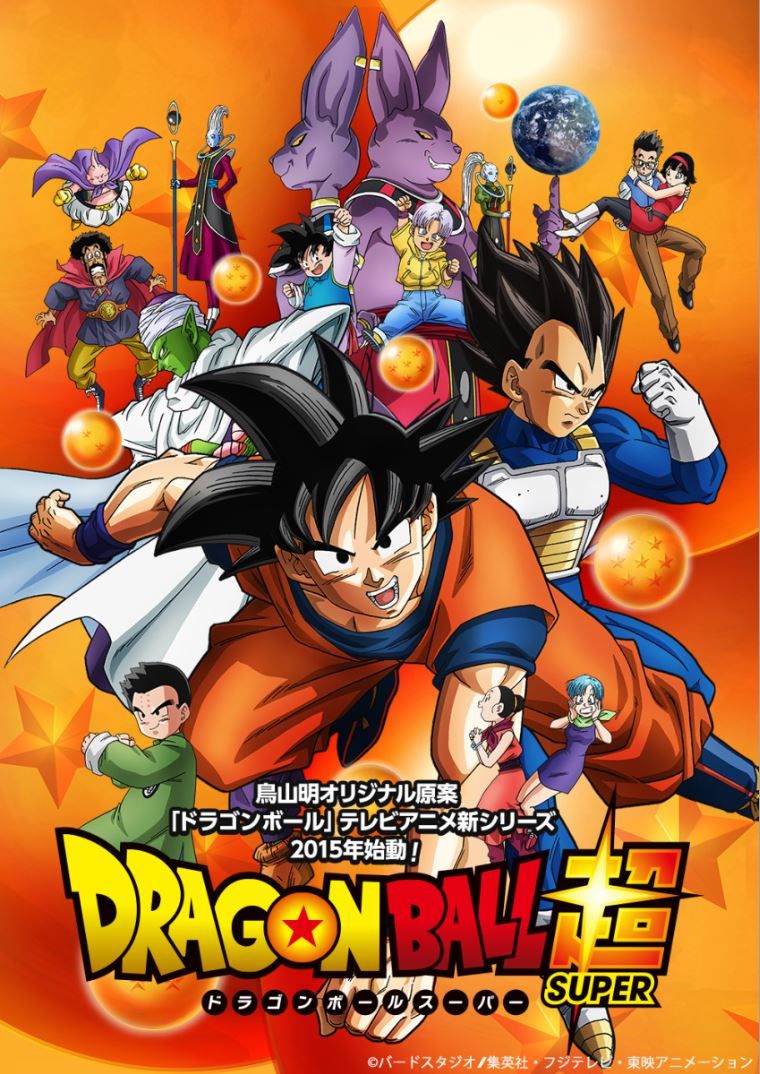
Dragon Ball
Dragon Ball tells the tale of a young warrior by the name of Son Goku, a young peculiar boy with a tail who embarks on a quest to become stronger and learns of the Dragon Balls, when, once all 7 are gathered, grant any wish of choice.
- Created by
- Akira Toriyama
- First Film
- Dragon Ball: Curse of the Blood Rubies
- Latest Film
- Dragon Ball Super: Super Hero
- First TV Show
- Dragon Ball
- Upcoming TV Shows
- Dragon Ball DAIMA
- First Episode Air Date
- April 26, 1989
- Cast
- Sean Schemmel , Laura Bailey , Brian Drummond , Christopher Sabat , Scott McNeil

